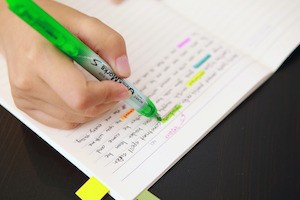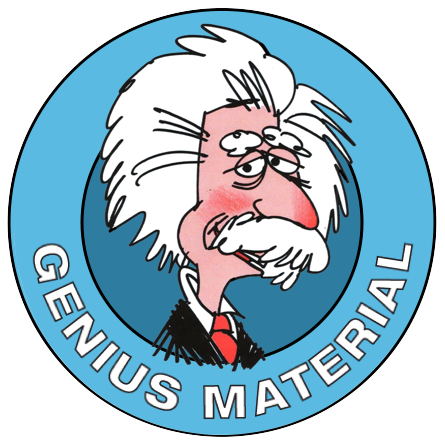 Want to know the secret of speedy studying?
Want to know the secret of speedy studying?
Yeah, me too!
Only kidding!
What do we already know about studying?
- There are as many ways of studying as there are people studying.
- Some strategies work better than others.
- And some of those strategies work well for some people, and not so well for others.
So where does that leave you?
Well, despite the differences between us (because, after all, we’re all Human beings, and therefore have a lot in common) it turns out…
Ready?
It turns out that the more we use our visual skills, the more efficient our studying will be and the faster we’ll learn.
Don’t panic!
 If you’re thinking that you’re not very ‘visual’; that you’re not imaginative enough or that you can’t see pictures in your head, you’re probably worrying for no reason.
If you’re thinking that you’re not very ‘visual’; that you’re not imaginative enough or that you can’t see pictures in your head, you’re probably worrying for no reason.
Admittedly, some people seem to be able to do this more easily than others, but we can all do it to some extent, and starting from wherever you are, the more you grow that visual ‘muscle’, the quicker you’ll get through the material you need to learn.
We Humans are highly visual creatures. About a third of our brain is dedicated to processing the information coming in through our eyes. That’s a lot of brain-power!
So let’s use it!
Here’s how I suggest you capitalise on this.
It goes without saying (doesn’t it?) when studying, that you will have already identified the keywords, and are in the process of actively manipulating them, giving your brain enough time to make a pattern of the material and send it to your long-term memory…
So as you set out your hand-written/hand-drawn notes (not typed, remember), include some or all of the following, so once you’ve done the hard work of getting the information into your head, you’ll still be able to remember it later.
 Colour – not randomly, but strategically, to group similar ideas together and separate them from other ideas
Colour – not randomly, but strategically, to group similar ideas together and separate them from other ideas- Shape and space – so when you close your eyes, you can still see, in your mind’s eye, where on the page the information is.
- Sections – breaking the material into bite-sized, brain-friendly chunks.
- Images – a picture paints a thousand words, and since you already use pictures in your head, for example, to remember where you parked the car – you know how powerful they are.
- Lines – to emphasise connections between ideas.
- Symbols – less is more. The less you can write/draw in your notes, the easier they’ll be to remember – so use symbols where possible, instead of words. E.g. % instead of percentage, cf instead of compared with. You get the idea.
- Likewise, diagrams and tables cut out the waffle, and are easier to recall.
Of course, to dissect and reassemble the information you’re learning, in your own, unique way, takes focus and effort. But it’s this very effort that makes the strongest connections in your brain, which clearly means that you’ve actually learned the information in the first place.
And the more energy you put into really learning it now, the more chance you have of remembering it later, guaranteeing you an easier time of it in your exams.
See?
Test your memory
The key to remembering where you leave your keys, glasses, husband…
I made that last bit up – to see if you were, guess what…
Paying attention!!
Watch this 2 minute video, improve your memory and let me know how you get on.
4 easy things to improve your memory by 10%
Don’t you just love it when science comes right out and verifies what we already know!
According to research (and to those of us who have already been doing it) each of the following will improve your recall by 10%.
I wonder what you could achieve if you did all 4…
Give these ideas a go, and in the spirit of further research, do leave a message telling me what you achieve.

